Types of Loads on Beams [Full Guide]
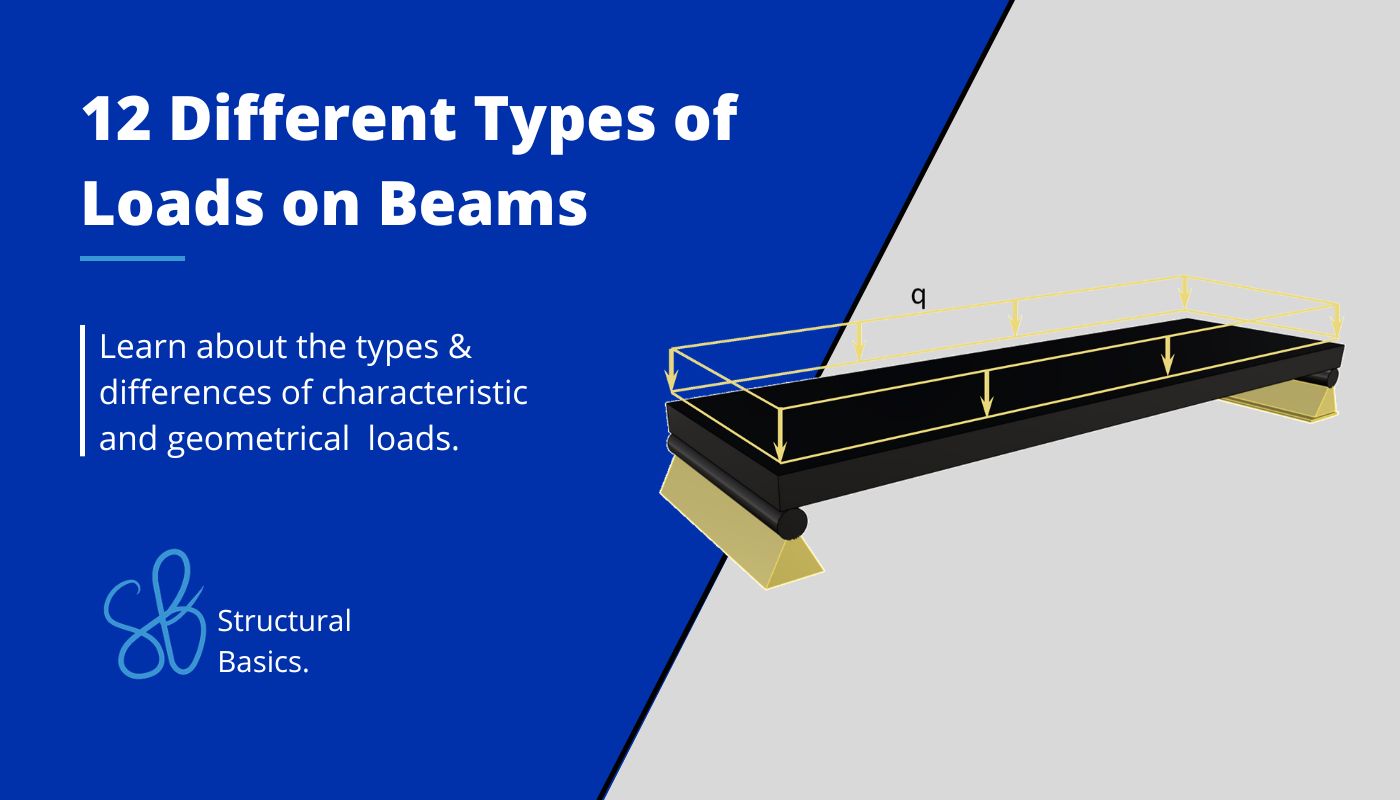
Where does this line load on the beam come from?
Well, there was this question.
But also many more when I was in university and should design my first steel structure – a warehouse.
The teachers thought it’s self-explanatory what loads need to be applied and how the loads distribute from one element to another.
It’s not!
That’s why we break it down in this post. We’ll show you, step-by step, what loads act on beams, where they come from and much more.
Let’s get started.
What Types of Loads Act on Beams?
Firstly, we need to clarify what we mean by types of loads.
In general, we differentiate between characteristic loads calculated according to Codes (like Eurocode) and, as I call them, geometrical loads which are basically the visual representation of the characteristic loads.
The latter is getting introduced in the very beginning of a civil engineering or architecture study, while the characteristic loads are often taught in later semesters.

Now, the line load of 3.0 kN/m applied to the beam in the picture above can be a characteristic load such as snow, wind load, etc. More on these types of loads later.
In this article, we’ll first break down the geometrical loads and then the characteristic loads.
Geometrical loads
“Geometrical loads” as I call them are loads that are representative and a mathematical approximation of “real” influences on structures such as snow, dead, wind, live load, etc.
You have probably seen these types of loads early in your studies. If not – we’ll explain it now, as simple as possible.
We visualize loads with one or multiple arrows ⬇️⬇️⬇️⬇️ depending on the type.
Let’s check out the different types.
Uniformly Distributed Line Load (UDL)
UDL on Beam

Unit of UDL q
Kilonewton per meter [kN/m]
Check out these formulas due to a UDL
- Bending moment and shear force formulas of simply supported beam due to UDL
- Bending moment formulas of cantilever beam due to UDL
- Deflection formulas of beams due to UDL
Point Load
Point Load on Beam

Unit of Point Load
Kilonewton [kN]
Check out these formulas due to a UDL
- Deflection of simply supported beam due to a point load
- Shear force formula due to point load on cantilever beam
Triangular Load
Triangular Load on Beam

Unit of Load q
Kilonewton per meter [kN/m]
Check out these formulas due to a UDL
- Deflection of simply supported beam due to a point load
- Shear force formula due to point load on cantilever beam
Trapezoidal Load
Trapezoidal Load on Beam

Unit of Loads q1 and q2
Kilonewton per meter [kN/m]
Moment
Area Load
Some of you might be thinking that area loads don’t act on beams, but on structural members like slab or walls.
And you are right! In most cases, area loads are not applied on beams.
But there are exceptions, such as when you simplify the static system of a bridge. The bridge deck of a cable stayed bridge can be modelled as a beam in a first approximation, where you apply an area load which you might translate into a line load.
Or think of precast concrete slabs. They are also calculated as a beam.
Conversion from Area Load to Line Load
I am honest with you!
Understanding how loads are transferred from one element to another and then down to the foundation took me forever.
But it doesn’t have to be that hard. I just had no lecture (or blog post 😜) about it.
Let’s get into it.
In this example, we’ll explain how an area load applied on a slab travels to a beam and then to 2 columns.
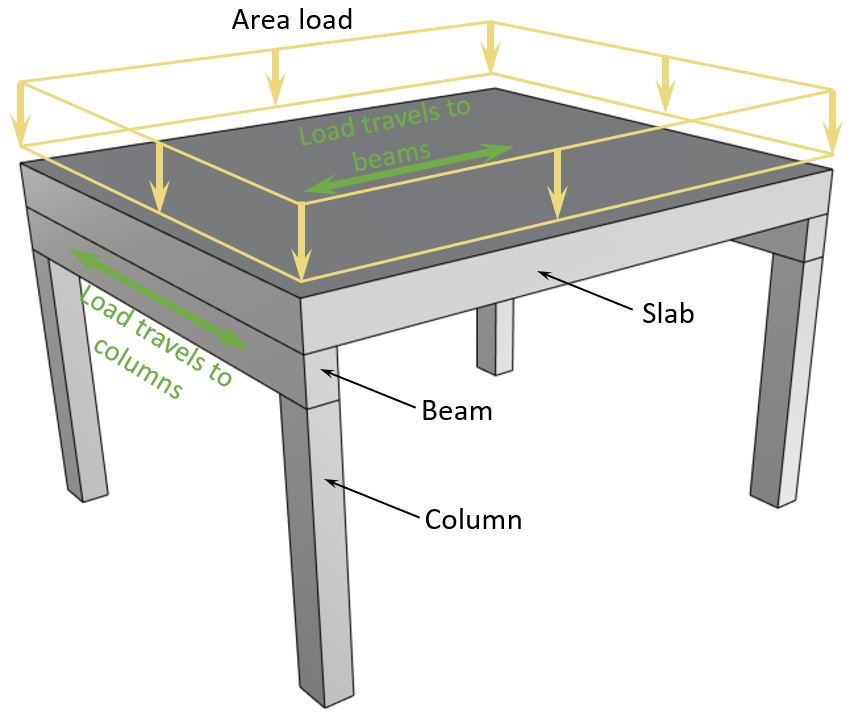
- Area loads are applied on slabs perpendicular to its surface
- The load travels through the slab and to both beams.
- The area load turns into a line load applied to the beams, calculated as Area load $\cdot$ Beam spacing/2.
- The load travels through the beams and to the columns.
- The line load of the beam turns into point loads applied axially on the columns. These are the reaction forces of the beam and calculated as Line load $\cdot$ span/2.
- The point load travels through the columns to the next element.
Characteristic Loads
Characteristic loads are mathematical approximations of influences on buildings and structures.
We calculate the values of these loads with Codes such as Eurocode in Europe.
Read this article if you want to learn more in detail about the different types of characteristic loads.
What types of characteristic loads do we consider?
Dead Load
The dead load is the weight of elements calculated in kN/m2, kN/m or kN
In regard to a beam: The self-weight of all elements that the beam has to carry is added, transformed from kg into kN and applied to the static system of the beam in the form of a line, point, triangular load, etc.
Check out this guide if you want to learn more about the dead load or how to calculate it.
Wind Load
The wind load is the result of wind blowing on a building/structure.
In Europe the values of the wind load are calculated with Eurocode EN 1991-1-4 and depending on the country its National Annex.
💡The geometrical load (area loads) are always applied perpendicular to the building surfaces (walls, roofs, windows, etc.).
Example wind load distribution: The area wind loads on the roof are taken by the roof slabs and distributed to the beams. By multiplying the area load with the distance between the beams, the wind load is applied as a line load.
Check out these guides to learn more about the wind load:
- Wind load on vertical walls
- Wind load on pitched roofs
- Wind load on flat roofs
- Wind load on arched roofs
Snow Load
The snow load is the result of accumulated snow on areas like roofs, canopies and other structures.
In Europe the values of the wind load are calculated with EN 1991-1-3 (Eurocode) and depending on the country its National Annex.
Example snow load distribution to beams: As for the wind loads, the area snow loads on the roof are taken by the roof slabs and distributed to the beams. By multiplying the area load with the distance between the beams, the snow load is applied as a line load.
Check out these guides to learn more about the snow load:
Live Load
The live load represents variable loads such as weight of people, furnitures, cars, office equipment, etc that can change over time.
In Europe the values of the wind load are taken from tables in EN 1991-1-1 (Eurocode) and depending on the country its National Annex.
Example live load distribution to beams: The area live loads on floors are taken by the horizontal slabs and distributed to the beams. By multiplying the area load with the distance between the beams, the live load is applied as a line load.
Check out this guide to learn more about the live load:
Earth Pressure
The earth pressure is the pressure that the soil applies in the lateral (horizontal) direction onto retaining walls, which are in some design situations treated as beams.
Check out this guide to learn more about the earth pressure:
- Earth pressure
Seismic Load
The seismic load is the resulting force due to earthquakes.
Check out this YouTube video. It explains the seismic load very well.👍
Conclusion
Now, that you got an understanding of what type of loads exist and act on beams, it’s time to understand how to calculate or define the loads.
Because there are always multiple loads acting on a beam/structural element. Considering these different loads in the structural design is done by setting up Load Combinations with safety factors.🦺
Once all load cases and combinations are set up, the beams can be designed. We have already written a lot of guides on how to design structural roof beams and other structures.
Check them out:
- Structural design of a purlin roof
- Structural design of a timber rafter roof
- Structural design of a timber beam
I hope that this article helped you understand how to work with beam loads. In case you still have questions, let us know in the comments below ✍️.
Loads on Beams FAQ
We differentiate between characteristic loads calculated by Standards and geometrical loads.
Examples of geometrical loads are:
– Uniformly distributed line load (UDL)
– Point load
– Triangular load
– Trapezoidal load
– External Moment
– Area load
Examples of characteristic loads are:
– Wind load
– Snow load
– Live load
– Dead load
– Earth pressure
– Seismic load
Loads are calculated or derived from formulas and tables given in Standards. Loads in Europe – for example – are calculated according to Eurocode. Every load (snow, wind, dead, live, earth pressure & seismic) is calculated according to its specific Standard. Every country in Europe has furthermore its own National Annex which specifies parameters.
Check out our blog to follow easy step-by-step guides.

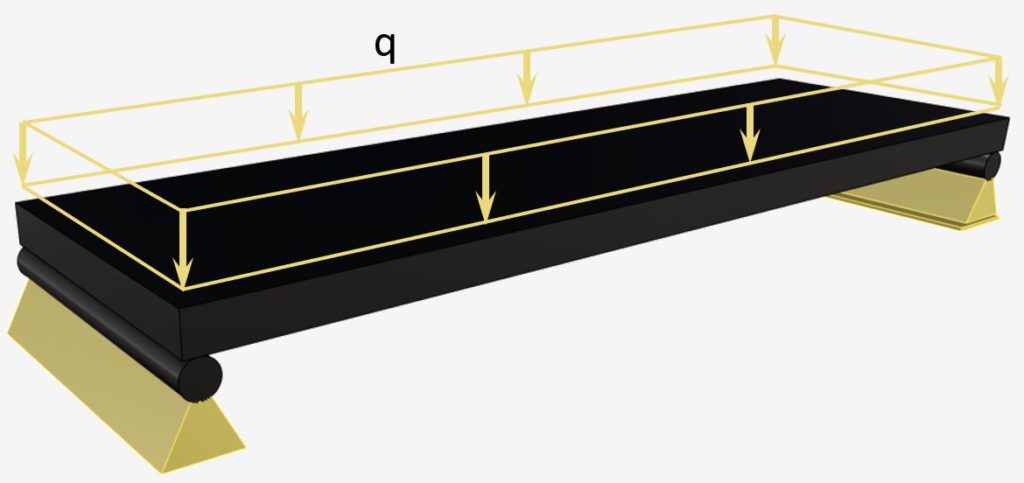
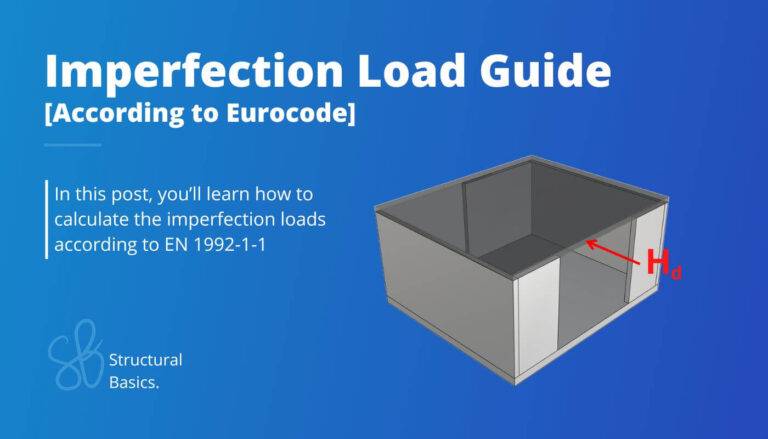
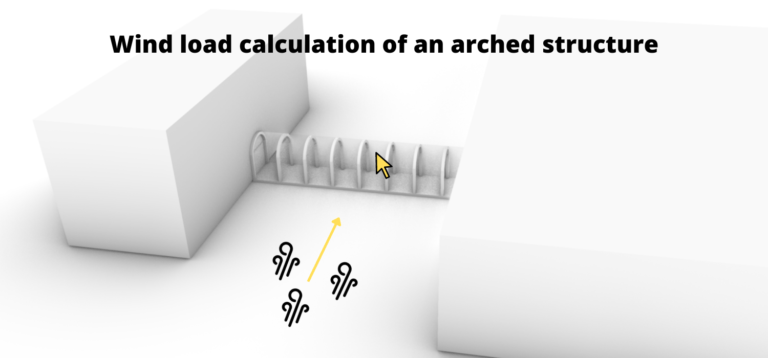
![Vertical Load Transfer In Structural Engineering [2025]](https://www.structuralbasics.com/wp-content/uploads/2024/09/Vertical-load-transfer-1-768x439.jpg)


![Earth Pressure Calculation On Underground Structures [2025]](https://www.structuralbasics.com/wp-content/uploads/2024/07/Earth-pressure-calculation-768x439.jpg)